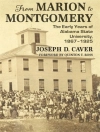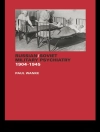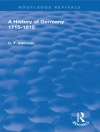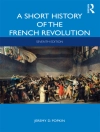Long ignored by scholars in the humanities, sound has just begun to take its place as an important object of study in the last few years. Since the late 19th century, there has been a paradigmatic shift in auditory cultures and practices in European societies. This change was brought about by modern phenomena such as urbanization, industrialization and mechanization, the rise of modern sciences, and of course the emergence of new sound recording and transmission media. This book contributes to our understanding of modern European history through the lens of sound by examining diverse subjects such as performed and recorded music, auditory technologies like the telephone and stethoscope, and the ambient noise of the city.
Содержание
List of Figures
Introduction
Daniel Morat
Part I: Sound History in Perspective
Chapter 1. Futures of Hearing Pasts
Mark M. Smith
Part II: Literature, Science, and Sound Technologies in the 19th Century
Chapter 2. English Beat: The Stethoscopic Era’s Sonic Traces
John M. Picker
Chapter 3. The Human Telephone: Physiology, Neurology, and Sound Technologies
Anthony Enns
Part III: Sound Objects as Artifacts of Attraction
Chapter 4. Listening to the Horn: On the Cultural History of the Phonograph and the Gramophone
Stefan Gauß
Chapter 5. Phones, Horns, and “Audio Hoods” as Media of Attraction: Early Sound Histories in Vienna between 1883 and 1933
Christine Ehardt
Part IV: Music Listening in the Laboratory and in the Concert Hall
Chapter 6. From the Piano Pestilence to the Phonograph Solo: Four Case Studies of Musical Expertise in the Laboratory and on the City Street
Alexandra E. Hui
Chapter 7. The Invention of Silence: Audience Behavior in Berlin and London in the Nineteenth Century
Sven Oliver Müller
Part V: The Sounds of World War I
Chapter 8. Cheers, Songs, and Marching Sounds: Acoustic Mobilization and Collective Affects at the Beginning of World War I
Daniel Morat
Chapter 9. Listening on the Home Front: Music and the Production of Social Meaning in German Concert Halls
during World War I
Hansjakob Ziemer
Part VI: Auditory Cultures in the Interwar Period
Chapter 10. In Storms of Steel: The Soundscape of World War I and its Impact on Auditory Media Culture During the Weimar Period
Axel Volmar
Chapter 11. Sound Aesthetics and the Global Imagination in German Media Culture around 1930
Carolyn Birdsall
Chapter 12. Neurasthenia, Civilization and the Sounds of Modern Life: Narratives of Nervous Illness in the Interwar Campaign against Noise
James Mansell
Part VII: The Sounds of World War II
Chapter 13. The Silence of Amsterdam before and during World War II: Ecology, Semiotics and Politics of Urban Sound
Annelies Jacobs
Notes on Contributors
Index
Об авторе
Daniel Morat is a Research Fellow and Lecturer in the History Department of the Free University Berlin. He currently holds a Dilthey Fellowship from the Fritz Thyssen Foundation, and since 2012 has directed the international research network “Auditory Knowledge in Transition: An Epistemic History of Listening in Modernity.” His publications include Von der Tat zur Gelassenheit. Konservatives Denken bei Martin Heidegger, Ernst Jünger und Friedrich Georg Jünger 1920-1960 (Göttingen 2007).












